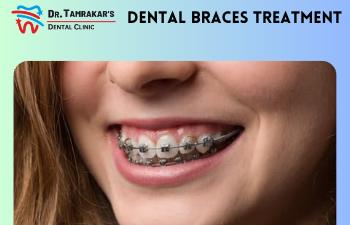Dental braces, also known as orthodontic braces, are devices used by orthodontists to straighten and align teeth. They are commonly used to correct various dental issues such as overcrowding, misaligned teeth, overbites, underbites, crossbites, and gaps between teeth. Braces typically consist of brackets, wires, and bands. The brackets are bonded to the teeth using dental adhesive, and the wires and bands are attached to the brackets. The orthodontist adjusts the wires periodically to apply gentle pressure, gradually moving the teeth into the desired position over time. The process of getting braces usually involves the following steps: Consultation: You visit an orthodontist who examines your teeth, takes X-rays, and discusses the treatment options suitable for your specific dental condition. Treatment planning: Based on the examination and X-rays, the orthodontist develops a customized treatment plan, including the type of braces that will be used. Braces placement: During this appointment, the orthodontist cleans and prepares your teeth for bonding. The brackets are then attached to the teeth, and archwires are inserted into the brackets. Adjustment appointments: Over the course of treatment, you will need to visit the orthodontist regularly for adjustments. During these appointments, the wires are tightened or replaced to continue guiding the teeth into the desired position. Duration of treatment: The duration of braces treatment varies depending on the severity of the dental issues. It can range from several months to a few years. Retention phase: After the braces are removed, a retention phase follows. This typically involves wearing a retainer (removable or fixed) to prevent the teeth from shifting back to their original position. It's important to maintain good oral hygiene during braces treatment by brushing and flossing regularly. Orthodontic patients may also be advised to avoid certain foods that can damage the braces or get stuck between the wires and brackets. If you're considering braces, it's best to consult with an orthodontist who can assess your dental needs and provide appropriate guidance for your specific case.


